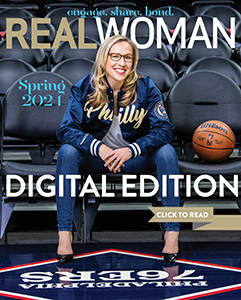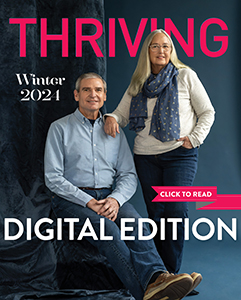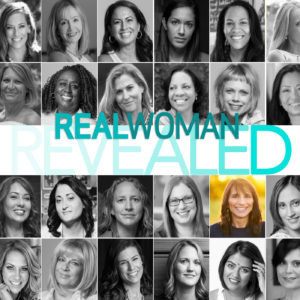See that magazine cover with the beautiful, curvaceous model running? Believe it or not, in 2015, that cover of Women’s Running is groundbreaking: it depicts a heavier woman in a fitness endeavor, showing that athletes don’t always have perfect, thin bodies.
The August issue of Women’s Running features Erica Jean Schenk, an 18-year-old, size-18 runner/model who was photographed for a feature on running apparel at any size. When the magazine was released a few weeks ago, the cover brought swift reaction—most of it positive—and the staff was hailed as bold and forward thinking.
Real Woman wanted to get to the bottom of the decision and find out if this will pave the way for Women’s Running (and possible other running and fitness publications) to show a more inclusive array of body types from here on out. Editor-in-chief Jessica Sebor offered her thoughts on the decision to go with this cover, how encouraging the reaction was, and why they plan to do more of it in the future.
Take us through your decision to put Erica on the cover.
The issue of body acceptance has been in our wheelhouse for a long time, but the concept for the cover actually came out of a feature we had planned that showed different apparel options for runners of various sizes. We found a runner/model who we were going to shoot for that feature, and we decided to use it for the cover to tie the issue together. We didn’t anticipate it would be such a big deal.
After the photoshoot, we realized it was probably the first time a curvier runner or athlete was on the cover of any running or fitness magazine. We thought maybe there was a story there. But as runners, it’s so normal to see other runners of all sizes at races and on the road that it didn’t seem like something that was earth-shattering.
What reaction did you expect?
We really didn’t have any reservations going into it. We thought maybe there would be some negative feedback. And that’s one of the best things that surprised us—there really wasn’t any negative feedback. In fact, it was almost exclusively positive feedback. Any time you do something that’s a little bit different, you expect reactions on both sides—it was really nice to see that it was overwhelmingly supportive.
Do you have a favorite response that will stay with you?
I got an e-mail from a reader who worked at a running store. She said a customer had complained to her boss that she was working there because she was a fuller-framed person. And then her boss relayed the message to her. She said seeing our magazine made her feel more confident in her position there and confident that one day that jerk of a customer and boss would respect her as an athlete.
 Do you think this cover and the positive response to it can change how the media covers plus-size athletes?
Do you think this cover and the positive response to it can change how the media covers plus-size athletes?
I really do. The first thing is it brings awareness to the fact that there is this population of people who are fit, healthy individuals who are also larger, and they deserve content and clothing and recognition just like anyone else. Even sourcing clothes for the feature about apparel for women of different sizes was difficult because not a lot of brands offer that. There’s a market there that deserves to be recognized.
The second part of the conversation is that there’s a misconception that your behavior and how healthy you are directly correlate to the size of your body. It is shocking to me that so many people really believe that, and how natural an assumption that is. If someone is X number of pounds and X height, that must mean they are eating this way and they have a certain activity level, and that goes both ways.
If you see a thin person, you assume things about her behavior, and if you see a curvier person, you make a different set of assumptions about her behavior. I think there’s a conversation that needs to be had there. And hopefully this can be a turning point.
Do you plan to show more average-size or plus-size women in the future?
Yes, absolutely. This made us realize just how important that is, and it’s not something you can approach casually. You need to aggressively have the goal to show women from different backgrounds and body types.
Do you think this will give other magazines a template to follow and realize that having a plus-size model on the cover will not cannibalize ad sales or newsstand sales?
I think internally within the industry, there’s a thought process that you need to have a body that’s aspirational on the cover. The more skin you show—if you show someone’s abs, if you show someone’s arms—it will sell better on newsstands. And to be fair, there is historical research to show that, but I think the culture changes. Buying behaviors shift. Now what people want to see is themselves on the cover. They respond to brands that are more inclusive. I hope that other running and fitness magazines will see this model and act in kind.
Do you think this can this change the way we look at runners as being for more than just skinny people?
In general, running is becoming a more inclusive activity. If you look at who runners were 20 years ago, it was majority male, Caucasian, and probably upper-middle class. The growth of running has made it open and accepted and participated by a wide swath of people of all different backgrounds—genders, sizes, ages, races—and so the sport has come far and the perception has as well.








